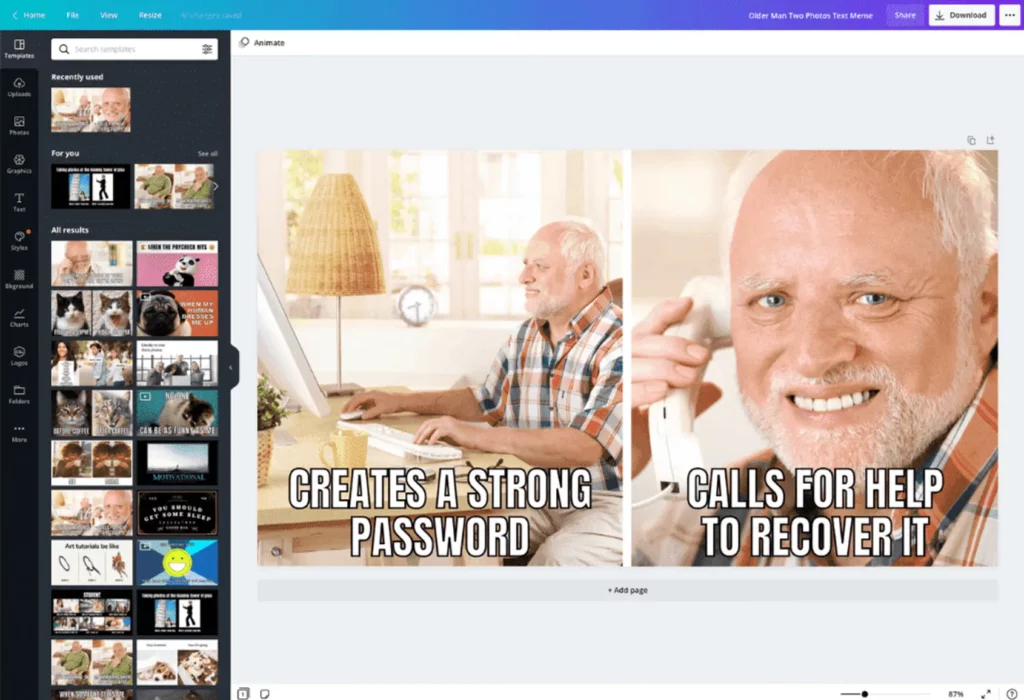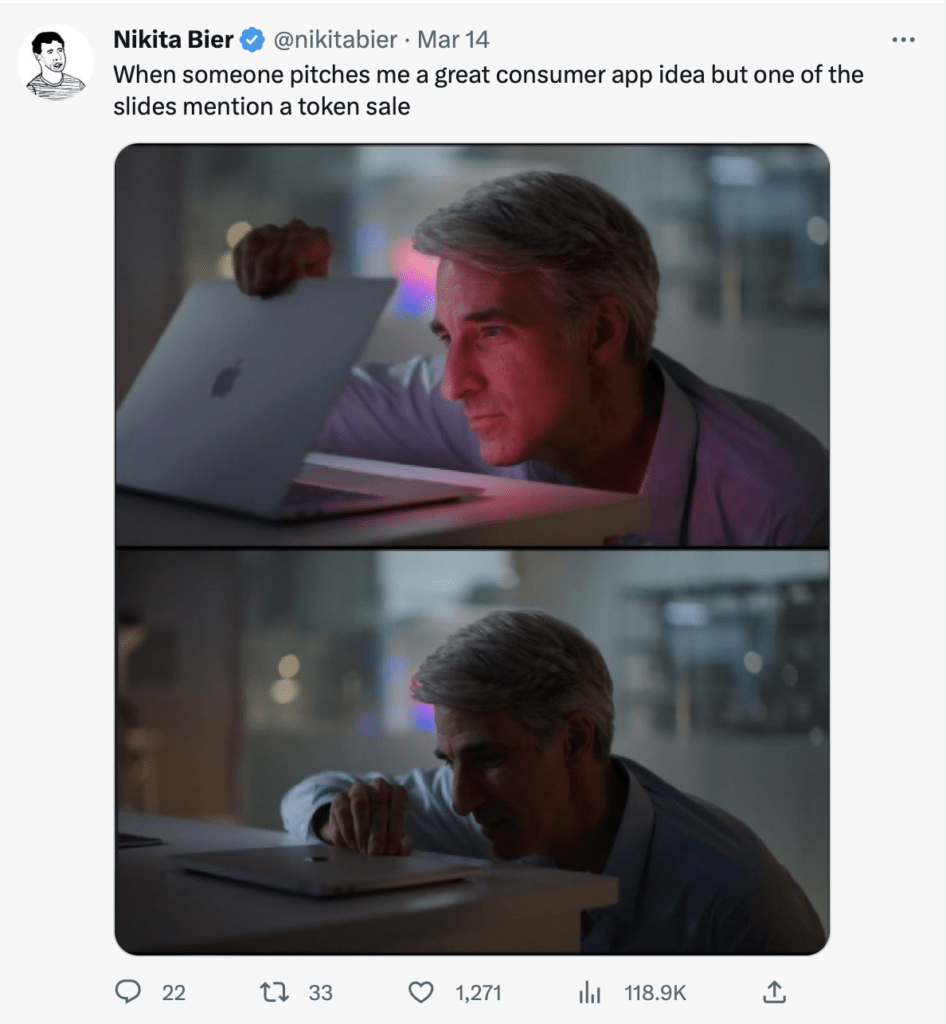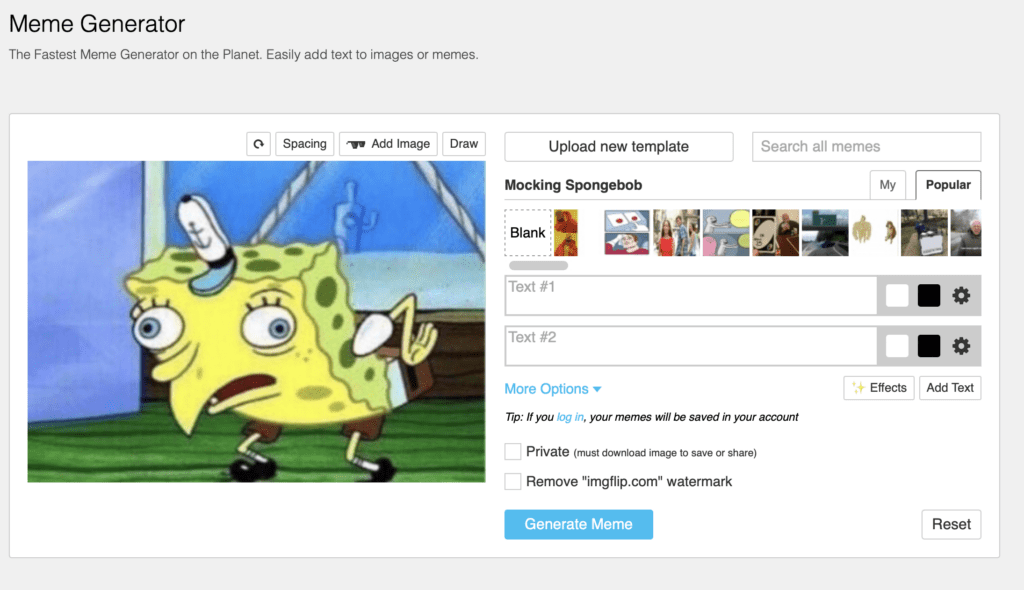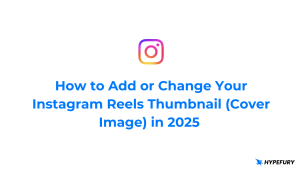Humor is a secret weapon on Twitter, and it’s no longer ‘unprofessional’ to be funny
Twitter is a platform that demands attention in a fast-paced, ADHD, TikTok, Gen-Z, 24-hour news cycle environment.
Brands and creators like you are constantly competing for visibility, engagement, and ultimately, growth.
In this hypercompetitive environment, it’s no longer enough to just have great content; you need to be able to capture and retain your audience’s attention.
This is where being funny on Twitter comes in. Accelerate your Twitter marketing by leveraging the power of one of humanity’s oldest forms of persuasion and audience-building — humor.
What we’ll cover in this blog post — Table of Contents
- Why being funny on Twitter is a tool in your toolbox
- Genres of funny Tweets you can repurpose again and again
- Software tools that can help you make memes
Why being funny on Twitter is a tool in your toolbox
Humor is a powerful tool for breaking through the noise and standing out on Twitter.
It’s no secret that people love to laugh, and incorporating humor into your tweets can help you establish a genuine connection with your audience.
And with the changing of the generations and some of the norms of older generations going away, it’s no longer extremely unprofessional to be funny on Twitter.
Multi-millionaires and people struggling to grow their businesses to their First Million, don’t need to wear suits and ties and have professional LinkedIn-style headshots. They can shitpost their way to their first million sometimes just as easily as they can follow the traditional path of ‘formal, business communication’.
Unless you are selling investment banking or legal services to the Fortune 500, or doing high-stakes invasive medival prodecures, you can probably afford to have a bit of fund while you build your business in public.
When you make your followers laugh, you’re not only entertaining them but also building an emotional bond that can lead to increased engagement, loyalty, and ultimately, growth.
But being funny on Twitter isn’t just about making jokes; it’s about understanding your audience and the culture of the platform.
Twitter users are known for their wit and love of clever wordplay, so it’s important to stay current on trending topics and memes. By tapping into the latest conversations and using humor to add your unique perspective, you can create tweets that feel fresh, relevant, and engaging.
In this blog, we’ll explore the importance of being funny on Twitter, the benefits of using humor to grow your audience, and share some tips on how to incorporate humor into your tweets effectively.
And look, there are all kinds of formats for telling jokes, including funny one-off tweets, memes, and the all-important Twitter threads.
Obviously there is nothing lamer than someone trying to ‘tell you how to be funny’. Getting a flair for what’s witty and what’s not at a basic social level is not something we can teach you in one article.
You’ve got to keep putting in the work you’ve been doing since you were a kid to figure out how to make people laugh.
The nice thing about Twitter is, you don’t even have to be an introvert. You’re typing from behind a keyboard. And with Hypefury, you can queue up your funny tweets ahead of time and be somewhere else when they get posted. Twitter is the great leveller — you can be funny and grow an audience without having to worry about a bunch of complex social skills that make you compelling in person…
I wouldn’t exactly call it ‘easy mode’, but with the right attitude and hustle, you can be funny on Twitter regardless of your personality type.
Funny Twitter threads might be the most powerful format for humor on Twitter
When it comes to humor on Twitter, funny threads can be incredibly powerful. Unlike a single tweet, a thread allows you to develop an idea or story over time, building suspense and anticipation among your audience. This format can be especially effective for creating comedic situations or exploring absurd scenarios that unfold over several tweets.
One of the reasons that funny Twitter threads can be so powerful is that they allow you to take your audience on a journey. By crafting a narrative that builds on itself over time, you can keep your followers engaged and interested, even as you introduce unexpected twists and turns. This can make your content feel more dynamic and interesting than a static image or one-liner.
Another advantage of funny Twitter threads is that they allow you to showcase your wit and creativity over a longer period of time.
By crafting a series of tweets that build on one another, you can demonstrate your ability to come up with funny ideas and execute them in a way that keeps your audience engaged. This can be especially powerful if you’re trying to establish yourself as a humorist or build a following around a specific theme or topic.
Perhaps most importantly, funny Twitter threads can be incredibly shareable. Because they build on themselves over time, they’re often more engaging and memorable than a single tweet. This can make them more likely to be shared and spread across the platform, leading to increased visibility and engagement for your brand or personal brand.
In short, funny Twitter threads can be a powerful tool for building engagement and connecting with your audience on a deeper level. By crafting a compelling narrative that keeps your followers engaged and interested, you can establish yourself as a humorist and build a following that’s passionate about your content.
Twitter culture, meme culture and business culture are inherently linked
Twitter is a platform that’s home to a diverse array of subcultures, from tech enthusiasts to fitness fanatics to pop culture junkies. One of the most effective ways to connect with these groups is to tap into their shared experiences and interests through humor.
By leveraging recurring genres of funny tweets that resonate within these subcultures, you can establish yourself as an insider who understands the quirks and idiosyncrasies of the community.
For example, Silicon Valley has its own unique brand of humor that revolves around tech industry buzzwords, startup culture, and the trials and tribulations of being a software engineer.
Tweets that play on these themes can quickly gain traction within the tech community, as they tap into shared experiences and provide a sense of recognition and validation.
Turner Novak has built an entire VC brand on top of attacking and satirizing the behavioral quirks of Silicon Valley with actually-good funny tweets.
Whether it’s poking fun at the latest productivity tool that has been made a hundred times before, or just riffing on the quirks of programming languages and SaaS tools, these types of tweets can help you establish yourself as a subject matter expert and a valuable member of the community.
But beyond just resonating with specific subcultures, using humor on Twitter is also a great way to showcase your subject matter expertise, fluency, and intelligence.
Genres of funny Tweets you can repurpose again and again
Funny tweets that incorporate industry-specific jargon or demonstrate a deep understanding of complex concepts can help you establish credibility and authority within your field.
By using humor to show off your knowledge in a way that’s engaging and accessible, you can create a connection with your audience that goes beyond just providing information.
Here are some examples you can use as a jumping-off point for creating funny Twitter threads and tweets:
Classic entrepreneur-culture tweets
- A thread of startup ideas generated by combining unrelated words from a dictionary and pitching them as the next big thing.
- Sharing a “before funding” and “after funding” photo series of progressively more extravagant office spaces.
- Live-tweeting a conversation between two AI chatbots discussing startup culture.
- A collection of your “greatest” (worst) tech puns, followed by their potential as startup names.
- A guide on how to properly dress for a Silicon Valley networking event using only thrift store finds.
- Sharing bizarre productivity hacks and asking followers to rate them on a scale of 1-10.
- A countdown of the top 10 funniest autocorrected VC messages you’ve ever received.
- A series of pun-filled reviews for popular project management tools.
- A thread where you try to explain blockchain to non-tech-savvy individuals and share their reactions.
- A “Choose Your Own Adventure” style story told entirely in code snippets.
- A fake press release for a revolutionary app that simply reminds users to drink water.
- A series of tweets predicting outrageous tech trends for the upcoming year.
- A DIY guide on how to turn old gadgets into modern art installations.
- A “start-up lingo” bingo card for followers to play along during their next pitch meeting.
- A series of haikus inspired by famous tech entrepreneurs and their accomplishments.
- A faux-serious investor pitch for an app that generates business jargon, complete with a dramatic video presentation.
- A compilation of the most exaggerated claims made by tech companies in their marketing materials (or, predictions that turned out to be wildly wrong — remember Bill Gates saying we wouldn’t need much RAM?)
- A photo series documenting your quest to find the most inspirational Silicon Valley coffee shop to work from.
- A tweet thread of iconic and hilarious quotes from your favorite indie makers or Silicon Valley entrepreneurs taken out of context
More ideas from maker/indie solopreneur culture
- A thread of amusing mistranslations you’ve encountered while working abroad.
- Sharing a “before travel” and “after travel” photo series of your progressively more minimalistic workspace setups.
- A collection of your “greatest” (i.e. worst) remote work puns, inspired by exotic locations and digital nomad lifestyles.
- Live-tweeting a conversation between your past self and your digital nomad self, discussing work-life balance.
- A guide on how to create the perfect home office setup using only items found in a hostel or Airbnb.
- Sharing creative hacks for staying connected to Wi-Fi in the most remote locations and asking followers to rate them on a scale of 1-10.
- A countdown of the top 10 most unexpected places you’ve taken a video call.
- A series of humorous reviews for popular travel gear and gadgets, from a solopreneur’s perspective.
- A thread where you try to explain the digital nomad lifestyle to your grandparents and share their reactions.
- A tweet where you talk about how addicted you are to certain SaaS tools even though you have a love-hate relationship with them
Software tools that can help you make memes
There are many software tools available that can help you make memes quickly and easily. Here are some of the best options:
Canva

Canva is a web-based design tool that’s user-friendly and offers a wide range of templates and design elements. With its drag-and-drop interface, you can quickly create eye-catching memes without any design experience.
Imgflip
Imgflip is an online meme generator that allows you to easily create and customize memes from a large library of pre-existing templates. You can add your own text, images, and captions to create unique and humorous memes in minutes.
Giphy
Giphy is a popular platform for creating and sharing animated GIFs, but it also offers tools for creating memes. With its large library of images and text tools, you can create custom memes that are perfect for sharing on social media.
Figma
Figma is often used for web and mobile interfaces and marketing materials, but it can also be an easy-to-use app (with a browser and desktop version) for quickly rolling out certain memes, or creating and storing visual meme templates that you can use again and again.
Adobe Photoshop
Photoshop is a powerful image editing software that’s great for creating memes. It offers a wide range of features, including layers, filters, and text tools, that make it easy to create custom memes from scratch.
This may sound a little old-fashioned, traditional, and a lot like “your dad’s image software”, but you still have to hand it to Adobe for providing the most complete and comprehensive image tools in the world. And they are still innovating, believe it or not.
Midjourney
Midjourney is an AI image generation service that is in beta — but has invited thousands of people to its Discord channel. Having built out its core product to a pretty high standard, there is now a pretty amazing ability to generate very high-quality images from a natural language prompt.
It may be that as AI helps augment certain SaaS features, services like Midjourney might become and more and more popular for making memes compared to the typical graphic design and illustrator software leaders.

AI-generated images still struggle with realistic text and and other problems in 2023, but it’s like these things will be solved before 2024 at the pace that AI is advancing…
Humor is one of the most subtle, human emotions — so be original and don’t outsource your jokes to AI — they’ll probably sound cringe.
To start posting funny tweets, Twitter threads and memes, check out Hypefury and get started today.








